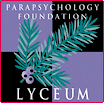 |
 |
| Click here for the PF Lyceum Site Index
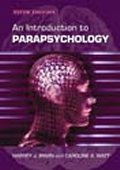 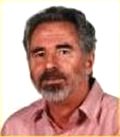
An Introduction to Parapsychology (Fifth Edition) by Harvey J. Irwin and Caroline Watt PF Lyceum Blog #22 Posted October 25th, 2007 
By Caroline Watt & Harvey J. Irwin Just released in its fifth edition, An Introduction to Parapsychology is the most widely-used international textbook on parapsychology (to obtain the book click here.) Now a retired associate professor in psychology at the University of New England, Australia, the original author Harvey Irwin has injected a fresh perspective by inviting as co-author Caroline Watt of the Koestler Parapsychology Unit at the University of Edinburgh. In the fifth edition, some of the more dated material has been removed, and there are entirely new sections on areas previously omitted such as research into Direct Mental Interaction with Living Systems, presentiment, and modern-day mediumship investigations. Additionally, whilst maintaining its balance between experimental and phenomenological approaches, the book is updated throughout with the latest empirical studies and meta-analyses. The authors strive to retain an appropriately critical perspective on parapsychological research, which makes this an excellent resource for undergraduate students as well as the interested layperson. The text’s seventeen chapters provide an exhaustive review of the major topics in parapsychological research. Each chapter is supplemented by a list of key terms and concepts, as well as a set of study questions to probe the reader’s appreciation of the focal issues and their implications. Outlines of each chapter are provided below. Chapter 1. Introduction. Parapsychology is defined as ‘the scientific study of experiences which, if they are as they seem to be, are in principle outside the realm of human capabilities as presently conceived by conventional sciences’ (p. 1). The book’s objective is to provide an overview of research into these apparently anomalous experiences. Three main areas of parapsychological research are introduced: extrasensory perception; psychokinesis; and the survival hypothesis — the notion that some element of human existence survives death. Chapter 2. Origins of Parapsychological Research. 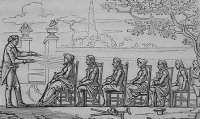 The immediate precursors of parapsychology were the popular movements known as Mesmerism and Spiritualism. Mesmerism raised the idea that paranormal phenomena could be observed under controlled conditions, and also could be examined outside occultist and quasi-religious contexts. The immediate precursors of parapsychology were the popular movements known as Mesmerism and Spiritualism. Mesmerism raised the idea that paranormal phenomena could be observed under controlled conditions, and also could be examined outside occultist and quasi-religious contexts. 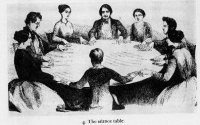
Spiritualism claimed that individuals called ‘mediums’ could communicate with the deceased, and could also produce various paranormal physical phenomena. The Society for Psychical Research was formed in 1882 in order to scientifically investigate mediumistic phenomena. 1882 is thus regarded as the beginning of scientific parapsychology. Chapter 3. The Phenomenology of Extrasensory Perception. 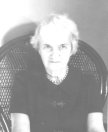 Louisa E. Rhine in the 1950s began collecting large numbers of ESP cases in order to observe patterns that would reveal the characteristics and occurrence of parapsychological experiences. Although spontaneous cases have evidential limitations due to the possibility of deliberate deception, self-deception, misperception, misrecollection, and the operation of chance, they nevertheless provide for the behavioural scientist a rich source of information about people’s paranormal experiences. Louisa E. Rhine in the 1950s began collecting large numbers of ESP cases in order to observe patterns that would reveal the characteristics and occurrence of parapsychological experiences. Although spontaneous cases have evidential limitations due to the possibility of deliberate deception, self-deception, misperception, misrecollection, and the operation of chance, they nevertheless provide for the behavioural scientist a rich source of information about people’s paranormal experiences.
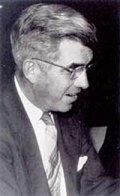 Chapter 4. Experimental research on extrasensory perception. Chapter 4. Experimental research on extrasensory perception.
Beginning in 1927 at Duke University in North Carolina, J. B. Rhine is widely regarded as the father of parapsychology for developing the classic ESP cards and techniques for their use. Parapsychologists thereafter moved from ‘restricted choice’ methods to ‘free response’ methods, where the task was to match participants’ impressions with a target presented along with usually three decoys, hence chance expectation is 25%. This method is favoured by most modern parapsychologists. The chapter describes participant, target, and situational variables that research suggests are associated with above-chance ESP scoring. Chapter 5. Extrasensory Perception and Time. The proposition that people can directly gain information about future events, known as precognition (fore-knowing), has been investigated from both phenomenological and experimental perspectives, as the chapter describes. Recently in parapsychology a related phenomenon has been explored: ‘pre-sentiment.’ In these studies, rather than having the participant make conscious guesses about a future target, the participant’s psychophysiology is continuously monitored. Several studies have reported that participants show elevated levels of arousal just before the presentation of emotionally arousing targets, compared to neutral targets. Chapter 6. Psychokinesis.  ‘Psychokinesis’ (PK) literally means movement by the mind or psyche, i.e., mind over matter. Laboratory testing has focused mostly on events that are only observable statistically (“Micro-PK”) in the form of deviations from mean chance expectation. Early micro-PK experiments were conducted by J. B. Rhine in the 1930s, in which participants were asked to influence the outcome of thrown dice. In the 1970s Helmut Schmidt introduced randon event generators (REGs) based on radioactive decay. In REG-PK studies, participants are asked to bias the output of REGs. Various meta-analyses of micro-PK research have been conducted, as reported in the chapter. ‘Psychokinesis’ (PK) literally means movement by the mind or psyche, i.e., mind over matter. Laboratory testing has focused mostly on events that are only observable statistically (“Micro-PK”) in the form of deviations from mean chance expectation. Early micro-PK experiments were conducted by J. B. Rhine in the 1930s, in which participants were asked to influence the outcome of thrown dice. In the 1970s Helmut Schmidt introduced randon event generators (REGs) based on radioactive decay. In REG-PK studies, participants are asked to bias the output of REGs. Various meta-analyses of micro-PK research have been conducted, as reported in the chapter.
Chapter 7. Special topics in PK research. This chapter discusses five topics that are related to psychokinetic effects: PK and the parapsychological experimenter effect; psychic healing; Direct Mental Interaction with Living Systems (DMILs); Macro-PK; psychic photography. Chapter 8. Theories of Psi. Theories have to consider firstly how information is mediated between the individual and the environment, and secondly how psi information comes to manifest itself in an individual’s consciousness and actions. The first question is addressed by so-called physical theories (e.g., involving electromagnetic radiation, or incorporating ideas from quantum mechanics, the second by psychological theories. Chapter 9. The Survival Hypothesis. The survival hypothesis concerns the notion of postmortem survival. The chapter reviews historical demonstrations of alleged survival through spiritual mediumship, including proxy sittings, ‘drop-in’ communicators , xenoglossy, and the so-called cross-correspondences. Modern-day investigations of mediums, both in the laboratory and in the field, are also presented. Finally, the chapter contrasts the survival hypothesis with the super-psi hypothesis. Chapter 10. Poltergeist Experiences. The German word ‘poltergeist’ roughly means a noisy, boisterous, troubling spirit or ghost, though it is hypothesized that this ‘spirit’ may originate from either a discarnate entity or a living individual. The phenomenology of poltergeist experiences is surveyed, including the movement of objects, unaccounted noises, fires, water inundation, physical assaults, and electronic phenomena. The chapter points out methodological weaknesses that may undermine some of the theoretical explanations for poltergeist experiences. Chapter 11. Near-Death Experiences.  The near-death experiences (NDEs) is defined as a transcendental experience precipitated by a confrontation with death. Perhaps the best-known collection of NDE cases is from Raymond Moody. He describes the phenomenological characteristics of NDEs, including the affective component, the out-of-body impression, the passage through darkness, seeing a light, encountering a ‘presence’, panoramic life review, and a transcendental realm. The chapter goes on to review research into the correlates of NDEs, and describes neuropsychological and psychological theories of the near-death experience. The near-death experiences (NDEs) is defined as a transcendental experience precipitated by a confrontation with death. Perhaps the best-known collection of NDE cases is from Raymond Moody. He describes the phenomenological characteristics of NDEs, including the affective component, the out-of-body impression, the passage through darkness, seeing a light, encountering a ‘presence’, panoramic life review, and a transcendental realm. The chapter goes on to review research into the correlates of NDEs, and describes neuropsychological and psychological theories of the near-death experience.
Chapter 12. Out-of-Body Experiences.  The out-of-body experience (OBE) is defined as an experience in which the centre of awareness appears to the experient to occupy temporarily a position spatially remote from his or her body. Research into OBEs, conducted mostly by psychologists, parapsychologists, and neurologists, has progressed largely independently of NDE research conducted by physicians (for a historical overview click here.) The chapter describes OBE phenomenology, circumstances of OBE occurrence, and characteristics of the typical OBE experient. The evidence in support of various theories is reviewed. The out-of-body experience (OBE) is defined as an experience in which the centre of awareness appears to the experient to occupy temporarily a position spatially remote from his or her body. Research into OBEs, conducted mostly by psychologists, parapsychologists, and neurologists, has progressed largely independently of NDE research conducted by physicians (for a historical overview click here.) The chapter describes OBE phenomenology, circumstances of OBE occurrence, and characteristics of the typical OBE experient. The evidence in support of various theories is reviewed.
Chapter 13. Apparitional Experiences. An apparition is a perceptual-like experience relating to a person or animal that is not physically present. Most research into apparitions has relied on case collections and surveys. The chapter reviews research on the phenomenology of apparitional experiences, correlates of apparitional experiences, and theories of the apparitional experience, which centre on the issue of whether the apparitional figures are objective or subjective phenomena. Chapter 14. Reincarnation Experiences. 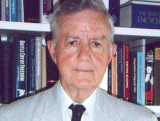 Reincarnation is the notion that a non-physical element of human existence not only survives death but subsequently is reborn in another body. Reincarnation is the notion that a non-physical element of human existence not only survives death but subsequently is reborn in another body. 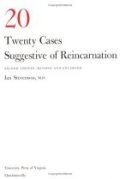 Ian Stevenson of the University of Virginia has been the most prominent investigator of reincarnation, putting great emphasis on investigating the authenticity of cases, and distinguishing between ‘solved’ cases, where the deceased personality is identified, and ‘unsolved’ cases, where this has not happened. The chapter discusses various theories of past-life experiences, and is critical of past-life hypnotic regression as a technique for ‘recovering’ past-life memories. Ian Stevenson of the University of Virginia has been the most prominent investigator of reincarnation, putting great emphasis on investigating the authenticity of cases, and distinguishing between ‘solved’ cases, where the deceased personality is identified, and ‘unsolved’ cases, where this has not happened. The chapter discusses various theories of past-life experiences, and is critical of past-life hypnotic regression as a technique for ‘recovering’ past-life memories.
Chapter 15. Belief in the Paranormal. Research into paranormal belief is of interest to skeptics and parapsychologists alike, because the question of the reality of ESP and PK is largely irrelevant to the question of belief. Indeed much of the work on belief has been conducted by psychologists rather than parapsychologists. One important issue to consider when reading blanket statements about ‘paranormal belief’ is that belief is multidimensional. Distinctions should be drawn between, for instance, superstitious belief, belief in psi phenomena, religious belief, and belief in UFOs and the Loch Ness Monster. The chapter details these and other distinctions, and relates them to research into demographic, attitudinal, cognitive, and personality correlates, and the theories of belief suggested by these correlates. Chapter 16. Matters of Relevance. This chapter raises issues about the wider context in which parapsychology, and paranormal experiences, exist, including: clinical issues; potential practical applications of psi; training psi; and military applications of psi. Chapter 17. Evaluation of Parapsychology as a Scientific Exercise. This chapter takes the perspective of the sociology of science, addressing the argument that parapsychology is a pseudoscience. Efforts to establish parapsychology as a science are described, including the use of controlled laboratory experimentation, increased use of technology, the formation (in 1957) of a professional society — the Parapsychological Association — that provides ethical guidelines for researchers, conducting one’s research within established respected institutions such as universities, and publishing that research within specialist peer-reviewed journals. According to many criteria, then, parapsychology is a legitimate scientific discipline. However, it lacks resources and the number of active researchers is relatively small. It also lacks well-established theories. Partly in consequence of these factors, sustained programs of systematic research are rare, thus knowledge acquisition is slow. In these respects, then, parapsychology might be viewed as a proto-science or a young science. The chapter discusses how critics have responded to parapsychologists’ efforts to put their field on a scientific footing. The book concludes by considering the contribution that parapsychology has made to science (on this issue click here.) |
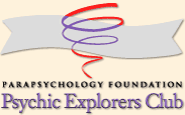 |

|
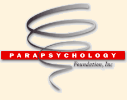 www. parapsychology. org |
||